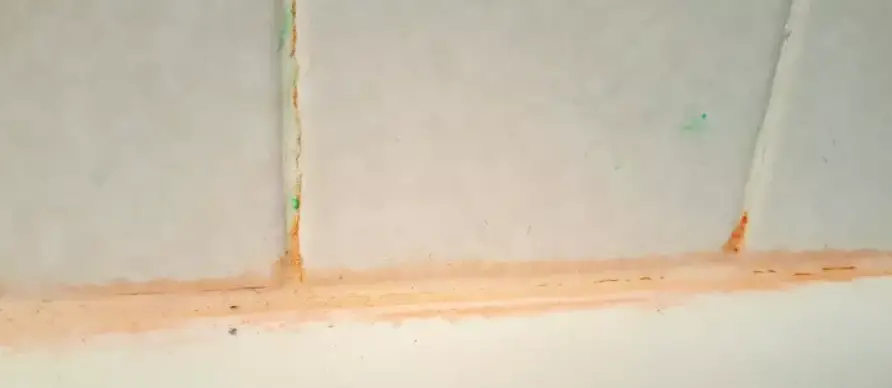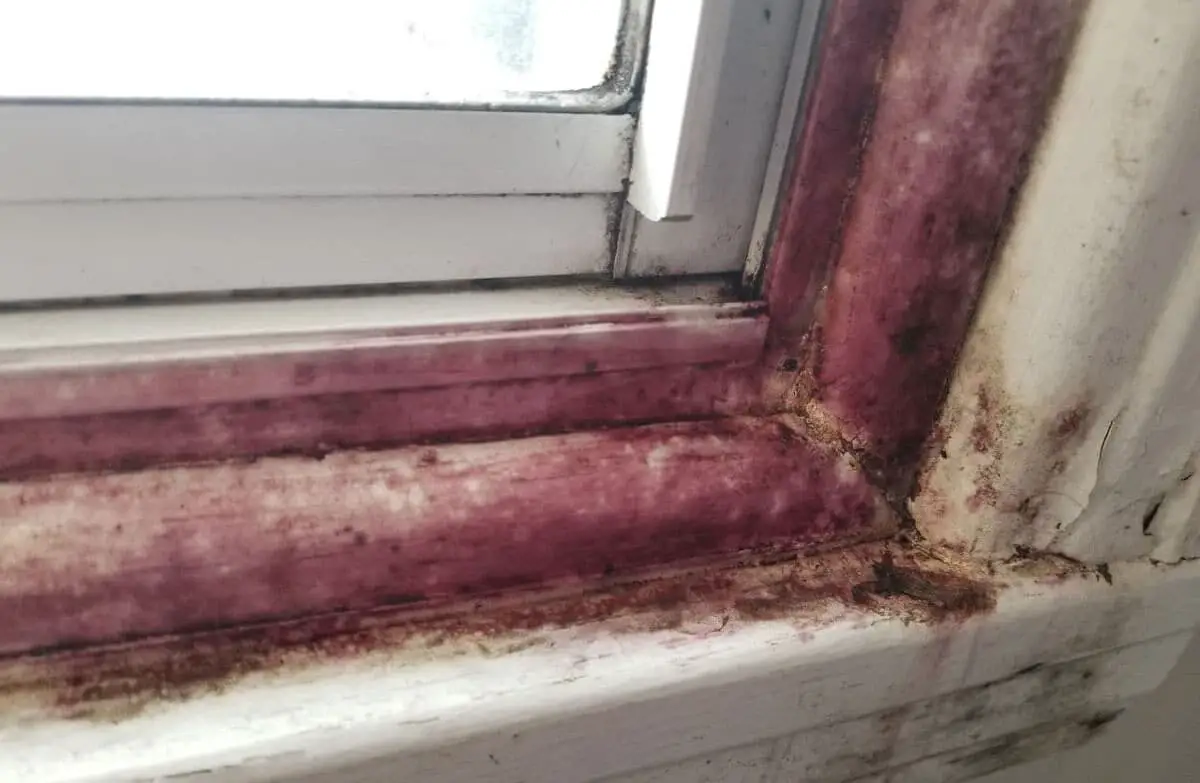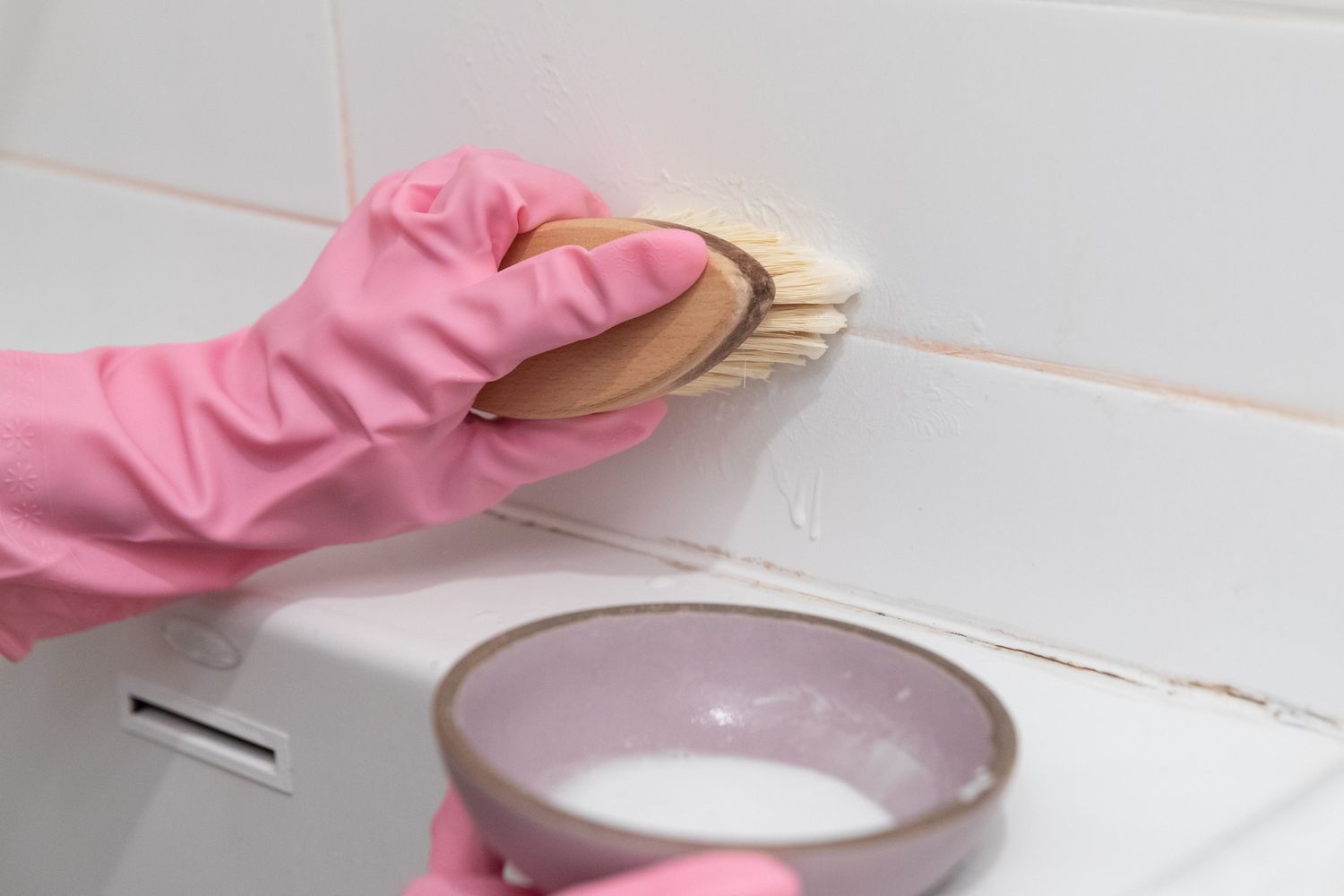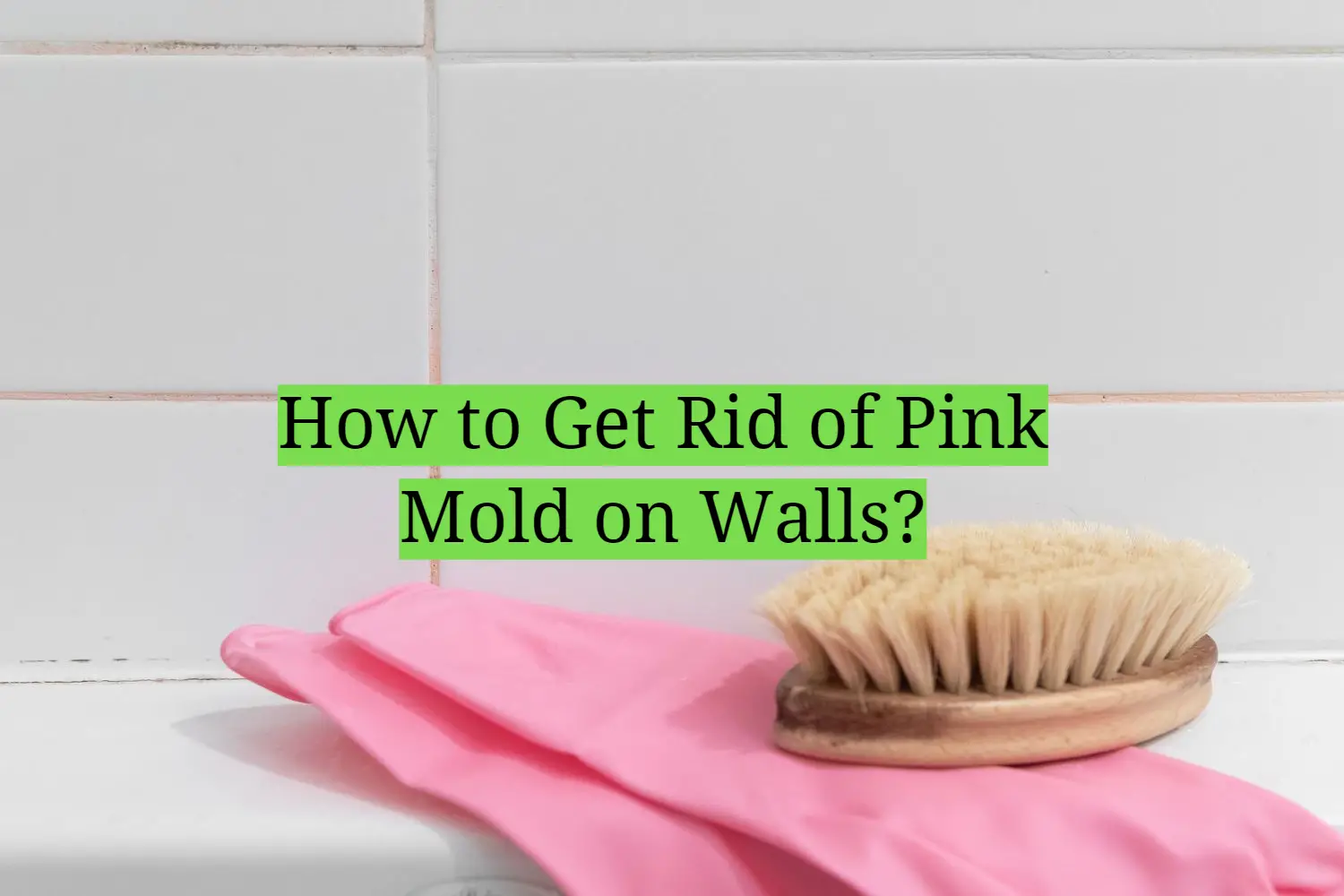Mold is a fungus that can grow almost anywhere there is moisture and organic material. While most molds are harmless, some can cause health problems. Pink mold is a type of mold that can be especially harmful to your health. If you have pink mold on your walls, it’s important to get rid of it as soon as possible. In this guide, we will answer common questions about pink mold and provide tips on how to get rid of it safely and effectively.
What Is Pink Mold?
Pink mold is a type of mold that can be found in damp, humid environments. It is often pink or reddish in color and can have a fuzzy or slimy appearance. Pink mold can grow on a variety of surfaces, including walls, ceilings, and floors.

While pink mold is not necessarily more harmful than other types of mold, it can cause health problems if it is inhaled or ingested. Pink mold produces spores which can cause allergic reactions in some people. In severe cases, pink mold exposure can lead to respiratory problems and other serious health issues.[1]
Is Pink Mold Dangerous?
While pink mold may look alarming, it is generally not considered to be dangerous. However, some people may experience allergic reactions when exposed to pink mold spores. If you have a mold allergy, you may experience symptoms such as coughing, sneezing, and watery eyes when exposed to pink mold. If you are concerned about your exposure to pink mold, you should consult with your doctor.
How Pink Mold Forms
Pink mold, or pink slime, is a type of bacteria that thrives in damp, humid environments. It can often be found growing on walls, ceilings, and other surfaces in homes and businesses. The bacteria gets its name from the pinkish color it often takes on when it’s growing in large colonies.

While pink mold is not necessarily harmful to humans, it can cause problems for people with respiratory issues like asthma or allergies. Additionally, the mold can cause staining and discoloration of surfaces where it grows.[3]
What You’ll Need
To get rid of pink mold on walls, you’ll need:
- A pair of gloves
- A face mask
- Vinegar or bleach
- Water
- A sponge or brush[1]
How to Remove Pink Mold

Mix a Cleaning Solution
To clean mold off of walls, you’ll need to mix a cleaning solution. For most surfaces, a simple mixture of soap and water will do the trick. However, if you’re cleaning mold off of painted walls or other delicate surfaces, you may want to use a gentler solution. In this case, mix one cup of white vinegar with one cup of water.[1]
Put on Protective Gear
Before you start cleaning, it is important to protect yourself from the mold. Mold can cause allergic reactions and respiratory problems, so it is important to take precautions. Wear gloves, a mask, and goggles when handling mold. You may also want to open windows for ventilation.[1]
Remove the Shower Curtain and Liner
If your shower has a curtain, start by removing it and washing it in the washing machine with hot water. If your shower has a liner, throw it away and replace it with a new one.[1]
Scrub Away the Bacteria
If you think you have pink mold, the first step is to clean it. You can use a variety of cleaners, but make sure to read the labels and follow the instructions carefully. The last thing you want to do is spread the bacteria around or damage your walls.
One way to clean pink mold is with bleach. Bleach will kill most bacteria, so it’s a good choice for cleaning surfaces like walls. However, bleach can also be harmful to your skin and eyes, so be sure to wear gloves and goggles when using it.
Another option for cleaning pink mold is vinegar. Vinegar is a natural disinfectant and can be used safely on most surfaces. However, it’s important to remember that vinegar is acidic, so it can damage some surfaces if used incorrectly.[2]
Rinse the Area
Start by rinsing the area with warm water and dish soap. This will help remove any dirt or debris that may be present. Be sure to rinse thoroughly and then dry the area with a clean towel. If the mold is still present, you may need to use a mild bleach solution.[1]
Prepare the Disinfectant Solution
The first step is to make a disinfectant solution. You will need:
- One gallon of water
- One cup of bleach
- A clean, empty spray bottle
Mix the water and bleach together in a large bowl or bucket, then pour it into the spray bottle. Be sure to label the bottle clearly so that you don’t accidentally use it for something else.[1]
Disinfect the Infested Area, Wait, and Scrub Again
If you’re still seeing pink mold after you’ve cleaned the area, it’s time to disinfect. You can do this by using a bleach solution. First, make sure that the area is well ventilated. Next, mix one cup of bleach with one gallon of water. Once you’ve mixed the solution, apply it to the affected area with a sponge or cloth. Wait for fifteen minutes before scrubbing the area again. Finally, rinse the area with clean water and dry it off completely.[1]
Rinse and Dry the Surfaces
The first step is to rinse and dry the surfaces that are affected by the pink mold. This will help to remove any spores that are present on the surface and will also help to prevent the spread of the mold.[1]
Hang the Shower Curtain
After you’ve scrubbed the mold away, make sure to hang the shower curtain back up. This will help prevent the mold from coming back.
Baking Soda Solution
To make a baking soda solution, mix one cup of baking soda with one gallon of water. Apply the mixture to the affected area with a sponge or brush, and scrub gently. Rinse the area with clean water and allow it to air dry.
You can also make a stronger solution by mixing one part baking soda with two parts water. This may be necessary if the mold is particularly stubborn. Again, apply the mixture to the affected area and scrub gently before rinsing with clean water and allowing to air dry.[4]
To remove pink mold from shower curtains
To remove pink mold from shower curtains, scrub the affected areas with a mixture of one part bleach to three parts water. Allow the curtains to air dry completely before hanging them back up.[5]
Tips to Prevent the Growth of Pink Mold
Pink mold, or pink mildew, is a type of mold that can grow on many different surfaces, including walls. While it is not as common as other types of mold, it can be difficult to get rid of once it starts growing. There are a few things you
can do to prevent the growth of pink mold on your walls:
- Keep your home clean and free of clutter. Mold likes to grow in dark, damp places. If you keep your home clean and free of clutter, there will be fewer places for the mold to hide.
- Fix any leaks in your home right away. Leaks in your plumbing or roof can cause water to seep into your walls, creating the perfect environment for mold to grow.
- Use a dehumidifier. Pink mold thrives in humid environments. By using a dehumidifier, you can create an environment that is not conducive to mold growth.
- Clean surfaces that are prone to mold growth. Pink mold can often be found on tile or grout in showers and bathrooms. Be sure to clean these surfaces regularly with a mild bleach solution to prevent the mold from taking hold.[4]

Comparison of Methods to Get Rid of Pink Mold on Walls
Pink mold is a common type of mold that thrives in damp and humid environments, often appearing as pink or reddish spots on walls. It can pose health risks and should be addressed promptly. This table compares different methods for effectively removing pink mold from walls, considering various indicators.
| Indicator | Bleach | Vinegar | Hydrogen Peroxide | Baking Soda | Ammonia |
|---|---|---|---|---|---|
| Efficacy | High | Moderate | Moderate | Low | High |
| Availability | Readily Available | Readily Available | Readily Available | Readily Available | Readily Available |
| Safety | Caution Required | Safe | Safe | Safe | Caution Required |
| Cost | Inexpensive | Inexpensive | Inexpensive | Inexpensive | Inexpensive |
| Application | Surface Spray | Surface Spray | Surface Spray | Paste | Surface Spray |
| Effect on Paint | Fades Colors | No Effect | No Effect | No Effect | No Effect |
Explanation of the Table:
- Efficacy: This indicator reflects the effectiveness of each method in eliminating pink mold from walls. The ratings are categorized as high, moderate, or low.
- Availability: This factor considers the ease of acquiring the necessary materials for each method. All the methods listed are readily available for purchase.
- Safety: Safety is an essential aspect when dealing with mold removal. The table indicates whether caution is required or if the method is considered safe for use.
- Cost: This indicator provides an overview of the cost associated with each method. All the methods listed are relatively inexpensive.
- Application: Different methods may require varying application techniques. The table specifies whether the method involves surface spray or the creation of a paste.
- Effect on Paint: Some mold removal methods can potentially affect the colors or integrity of the painted surface. The table indicates whether the method may fade colors or have no effect on paint.
FAQ
What causes pink mold on walls?
There are a few different things that can cause pink mold to grow on your walls. One of the most common is high humidity levels in your home. This can happen if you live in an area with high humidity, or if you have poor ventilation in your home. Another common cause of pink mold is leaks in your plumbing or roof. If water is seeping into your walls, it can create the perfect environment for mold to grow.
What removes pink mold?
To remove pink mold, use a solution of one part bleach to ten parts water. Apply the solution to the moldy area with a sponge or brush and scrub until the mold is gone. Rinse the area with clean water and allow it to dry completely. You can also use white vinegar or hydrogen peroxide to kill pink mold. Simply apply either of these solutions to the affected area and let it sit for about an hour before wiping it away. Be sure to ventilate the room well when using any of these substances, as they can be harmful if inhaled.
Does vinegar clean pink mold?
White vinegar is a potent cleaning solution that can kill pink mold spores on contact. You can use it to clean moldy surfaces in your home, like walls and floors. To clean with vinegar, simply mix equal parts water and vinegar in a spray bottle and spritz the affected area. Let the solution sit for a few minutes, then wipe it away with a damp cloth. Repeat this process until the mold is gone.
If you’re concerned about the strong smell of vinegar, don’t worry – it will dissipate quickly once the area is dry.
How long does it take for pink mold to grow?
Pink mold can grow relatively quickly, often appearing within a few days to a week after moisture appears on the surface of your walls. However, it’s important to note that the time it takes for pink mold to grow can vary depending on the level of humidity and temperature in your home. If you suspect that you have pink mold growing on your walls, it’s important to take action as soon as possible to prevent the problem from becoming worse.
What is the difference between mold and mildew?
Mold and mildew are both fungi that can grow in your home. They are often found in damp, dark areas, such as basements or bathrooms. Mold is usually green, black, or brown, while mildew is usually white or gray. Both mold and mildew can cause health problems, so it’s important to get rid of them as soon as you see them.
How do I identify pink mold on walls?
Pink mold on walls often appears as pink or reddish-colored patches or spots. It can have a slimy texture and may appear in clusters or spread across surfaces. If you notice any pink or reddish growth on your walls, especially in damp areas, there is a possibility it could be pink mold.
Can I remove pink mold on walls with bleach?
While bleach is effective against many types of mold, it may not be the best solution for pink mold on walls. Pink mold, also known as Aureobasidium or Fusarium, has a unique resistance to bleach. It is recommended to use alternative cleaning methods specifically designed to address pink mold.
What are some effective home remedies to get rid of pink mold on walls?
Several home remedies can help eliminate pink mold on walls. One option is to create a mixture of borax and water and apply it directly to the affected areas. Another remedy involves using hydrogen peroxide, which can be sprayed or applied with a cloth onto the moldy surface. Additionally, tea tree oil mixed with water can be an effective natural solution to combat pink mold.
Should I hire a professional to remove pink mold from my walls?
In most cases, you can handle the removal of pink mold from walls on your own. However, if the mold growth is extensive, covers a large area, or is persistent despite your efforts, it may be advisable to seek professional assistance. Professional mold remediation experts have the knowledge, experience, and equipment to effectively tackle severe mold infestations.
How can I prevent pink mold from reoccurring on my walls?
To prevent pink mold from reoccurring on your walls, it’s essential to address the underlying causes. Keep the affected area well-ventilated to reduce moisture levels and minimize humidity. Fix any water leaks or plumbing issues promptly, as dampness promotes mold growth. Regularly clean and dry the walls, especially in areas prone to moisture, such as bathrooms or basements.
Can pink mold on walls be harmful to my health?
While pink mold is not as dangerous as certain types of black mold, it can still cause health issues, especially for individuals with allergies or weakened immune systems. Exposure to pink mold can lead to respiratory problems, allergic reactions, and skin irritation. It’s important to address pink mold promptly and take precautions to minimize exposure.
Are there any commercial cleaning products specifically for pink mold removal?
Yes, there are commercial cleaning products available that are specifically formulated for pink mold removal. These products often contain ingredients designed to target and eliminate pink mold effectively. When using commercial cleaners, always follow the instructions provided by the manufacturer and take appropriate safety precautions, such as wearing protective gloves and ensuring proper ventilation.
What should I do if pink mold keeps coming back despite cleaning?
If pink mold keeps reappearing on your walls, it’s crucial to assess and address the underlying moisture issue. Check for hidden sources of water or excessive humidity in the area. You may need to consult a professional to identify and resolve any structural or plumbing problems that are contributing to the mold growth. Additionally, consider using mold-resistant paint or coatings to help prevent future mold problems.
Can I use vinegar to clean pink mold on walls?
While vinegar is often touted as a natural cleaning agent, it may not be effective in removing pink mold on walls. Pink mold has a resistance to vinegar and may require alternative cleaning methods. It is recommended to use specific remedies or cleaning products designed to target pink mold for better results.
What steps should I follow to clean pink mold on walls?
To clean pink mold on walls, follow these steps:
1. Put on protective gloves, safety goggles, and a mask to minimize exposure to mold spores.
2. Prepare a cleaning solution by mixing an appropriate mold cleaner or a DIY solution like borax and water, hydrogen peroxide, or tea tree oil and water.
3. Test the cleaning solution on a small, inconspicuous area of the wall to ensure it doesn’t cause any damage or discoloration.
4. Apply the cleaning solution to the affected areas using a sponge, brush, or spray bottle, depending on the consistency of the solution.
5. Scrub the mold gently but thoroughly, making sure to reach into crevices and corners.
6. Rinse the wall with clean water and wipe away any residue.
7. Dry the wall thoroughly using a fan, dehumidifier, or natural airflow.
8. Dispose of any contaminated materials, such as cleaning cloths or sponges, in a sealed plastic bag.
9. Monitor the area for any signs of recurring mold and take preventive measures to prevent future growth.
Is it necessary to repaint the walls after removing pink mold?
In some cases, repainting the walls may be necessary after removing pink mold, especially if the mold has caused staining or discoloration. However, if the mold growth was minimal and the walls are otherwise in good condition, repainting may not be required. Assess the condition of the walls after cleaning and decide if repainting is necessary for aesthetic reasons or to create a moisture-resistant barrier using mold-resistant paint.
Can pink mold on walls spread to other areas of the house?
Yes, pink mold can spread to other areas of the house if the conditions are favorable for its growth. Mold spores can become airborne and travel through the air or attach to clothing, pets, or objects, allowing them to be transported to different locations. To prevent the spread of pink mold, it’s crucial to address the underlying moisture issue, clean affected areas promptly, and take preventive measures such as improving ventilation and reducing humidity levels throughout the house.
Are there any health risks associated with cleaning pink mold on walls?
Cleaning pink mold on walls can pose some health risks, particularly if proper safety precautions are not followed. Mold spores, when disturbed during the cleaning process, can become airborne and potentially cause respiratory problems, allergic reactions, or skin irritation. To protect yourself, always wear protective gloves, safety goggles, and a mask. Ensure the area is well-ventilated, and consider using a HEPA filter or air purifier to capture airborne spores during and after cleaning.
Can I prevent pink mold on walls by using bleach regularly?
Using bleach regularly may not effectively prevent pink mold on walls. Pink mold has a resistance to bleach. Instead, focus on addressing the underlying causes of mold growth, such as moisture and humidity. Implement measures to improve ventilation, control humidity levels, promptly repair water leaks, and maintain proper cleanliness and dryness in areas prone to moisture, such as bathrooms and basements.
Useful Video: How to Get Rid of Pink Slime Around the Drain 💥 Pink Mold No More!
Conclusion
Hopefully, this article has given you some clarity on how to get rid of pink mold on walls. Remember to take precautions when handling the mold and be sure to clean the area thoroughly afterwards. If the problem persists, don’t hesitate to call in a professional for help. Thanks for reading!
References
- https://www.thespruce.com/how-to-remove-pink-mold-5115056
- https://www.hunker.com/12000286/red-algae-and-shower-stalls
- https://www.homereference.net/pink-mold/
- https://www.lucehome.sg/blog-article/how-to-get-rid-of-pink-mold-in-bathroom
- https://www.networx.com/article/pink-mold














Leave a Reply